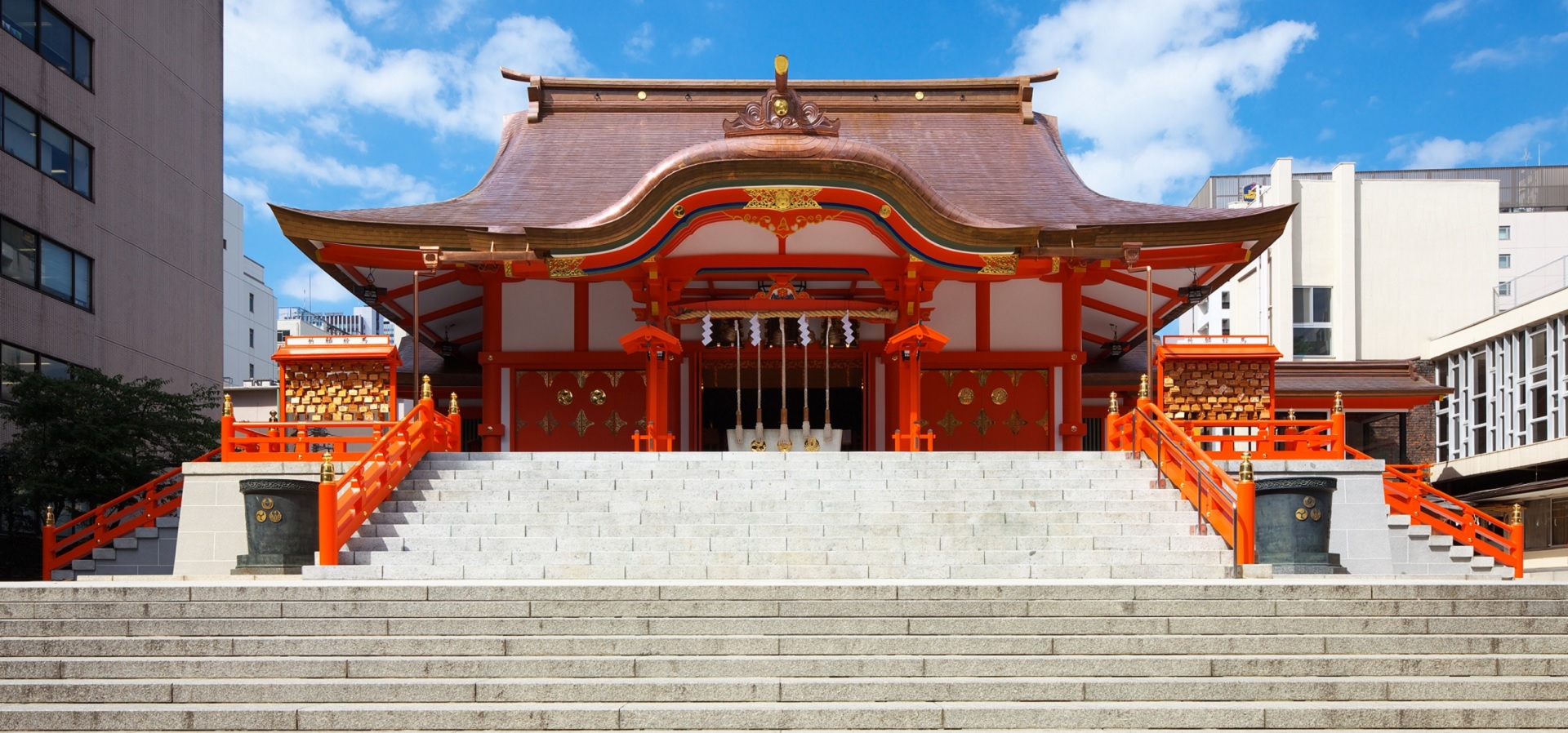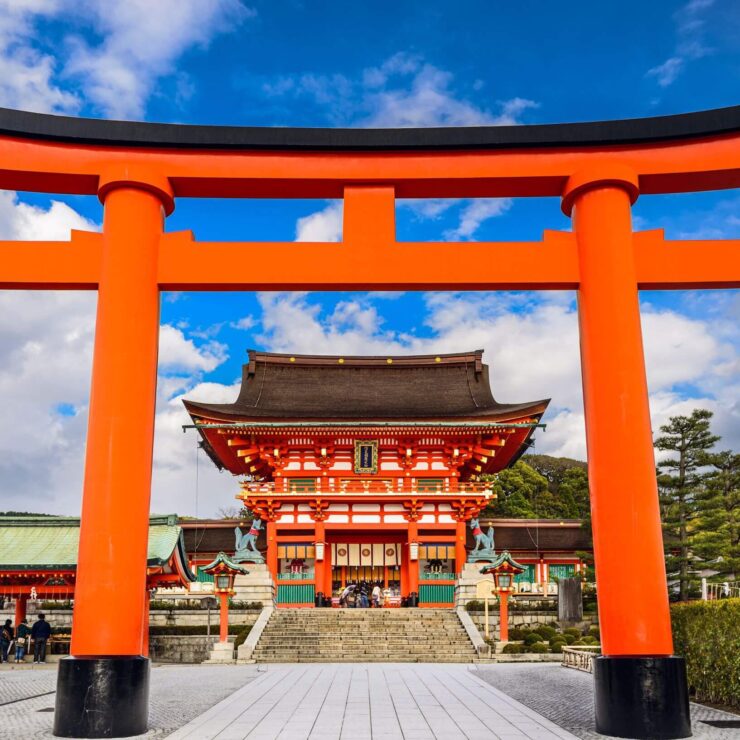A Sacred Oasis Amid Urban Energy
In the heart of Tokyo’s most vibrant and frenetic district lies an unexpected sanctuary of peace and tradition. Hanazono-jinja Shrine stands as a remarkable testament to Japan’s ability to preserve its cultural heritage amidst the relentless march of modernity. Just a short 10-minute walk from the bustling Shinjuku Station, this Shinto shrine offers visitors a profound glimpse into Japan’s spiritual traditions while providing a tranquil respite from the neon-lit streets that surround it.
Founded in the mid-17th century during the early Edo period, Hanazono-jinja (literally “Flower Garden Shrine”) has witnessed centuries of Tokyo’s transformation from a small castle town to one of the world’s most dynamic metropolises. Despite being completely surrounded by towering skyscrapers and commercial buildings, the shrine maintains its sacred atmosphere, creating a striking juxtaposition between ancient traditions and contemporary urban life.
Historical Significance and Architectural Beauty
Hanazono-jinja’s origins are deeply connected to the Hanazono family, who were prominent landowners in the area during the Edo period. The shrine was established to honor Inari, the Shinto deity of fertility, rice, agriculture, and general prosperity. Over time, it became particularly associated with entertainers and merchants, reflecting the evolving character of the Shinjuku district itself.
The shrine’s architectural style is a classic example of traditional Shinto design. The main building (honden) is constructed in the distinctive dozo-zukuri style, characterized by its elegant simplicity and harmonious proportions. The vermilion-colored torii gates that mark the entrance to the sacred space create a striking visual contrast against the surrounding concrete and glass structures of modern Shinjuku.
Visitors approaching the shrine will notice the meticulously maintained grounds, featuring stone lanterns, purification fountains (temizuya), and carefully pruned trees that change their appearance with the seasons. The main prayer hall (haiden) showcases traditional craftsmanship with its wooden construction and ornate decorative elements that have been preserved through careful restoration efforts over the centuries.
Festivals and Cultural Celebrations
One of the most compelling reasons to visit Hanazono-jinja is to experience its vibrant festivals (matsuri) that punctuate the Japanese calendar year. The most famous of these is the Tori-no-Ichi Festival, held annually in November. This centuries-old tradition dates back to the Edo period and centers around the selling and buying of ornate bamboo rakes called “kumade,” which are believed to “rake in” good fortune and prosperity for the coming year.
During Tori-no-Ichi, the shrine grounds transform into a lively marketplace filled with food stalls, games, and vendors selling the ceremonial kumade in various sizes and decorative styles. The festival creates a sensory feast with the sounds of traditional music, the aroma of street food, and the sight of visitors clapping and praying for good fortune after purchasing their lucky rakes.
Another significant celebration is the Reitaisai Festival, the shrine’s annual grand festival typically held in spring. This event features traditional Shinto rituals, mikoshi (portable shrine) processions through the local neighborhoods, and performances of sacred music and dance. The cherry blossom season also brings special significance to Hanazono-jinja, as the shrine grounds become adorned with delicate pink blooms, attracting visitors seeking both spiritual connection and natural beauty.
Spiritual Practices and Modern Relevance
For the curious traveler, Hanazono-jinja offers insight into living Shinto practices that continue to play an important role in contemporary Japanese life. Visitors can observe or participate in traditional rituals such as cleansing hands and mouth at the temizuya before approaching the main hall, offering prayers with a bow and clap sequence, and purchasing ema (wooden prayer plaques) or omamori (protective amulets) for various aspects of life including success in business, academic achievement, or safe travel.
The shrine has adapted to modern times while maintaining its spiritual integrity. It’s particularly popular among entertainers, artists, and businesspeople in the surrounding Shinjuku area who seek blessings for success in their endeavors. This connection to the entertainment world reflects the shrine’s continued relevance in contemporary Tokyo society.
A Visitor’s Guide to Sacred Exploration
For tourists planning a visit, Hanazono-jinja is remarkably accessible. From Shinjuku Station’s east exit, it’s approximately a 10-minute walk through the lively streets of Kabukicho and the Golden Gai area. This approach allows visitors to experience the dramatic transition from Tokyo’s urban energy to the shrine’s serene atmosphere.
The shrine is open daily and requires no admission fee, making it an excellent addition to any Tokyo itinerary. Morning visits often provide the most peaceful experience, though the shrine takes on a magical quality in the evening when illuminated against the backdrop of Shinjuku’s famous neon landscape.
Photography is permitted in most areas, though visitors should maintain respectful behavior, particularly during ceremonies or when worshippers are present. The shrine complex is also wheelchair accessible, with ramps available at key points, making it inclusive for visitors with mobility considerations.
Cultural Etiquette and Respectful Visitation
When visiting Hanazono-jinja, observing proper etiquette enhances both the experience and shows respect for this sacred space. Visitors should bow slightly when passing through torii gates, which mark the transition from the secular to the sacred world. When approaching the main hall for prayer, the traditional sequence involves two bows, two claps, a moment of silent prayer, and a final bow.
Dress code is generally casual but modest. The shrine’s staff are accustomed to international visitors and are often willing to explain elements of the shrine or ongoing ceremonies, though English explanations may be limited. Many information boards include English translations to help foreign visitors understand the significance of different shrine elements.
Beyond the Shrine: The Surrounding Cultural Landscape
A visit to Hanazono-jinja can be thoughtfully integrated into a broader exploration of Shinjuku’s cultural landscape. After experiencing the shrine’s tranquility, visitors might contrast this with the nearby Golden Gai district, a network of narrow alleyways housing tiny bars and eateries that preserve the atmosphere of post-war Tokyo. Similarly, the traditional crafts shops surrounding the shrine offer authentic souvenirs that connect to Japan’s artistic heritage.
The shrine’s location provides a perfect starting point for a walking tour that showcases Tokyo’s remarkable ability to juxtapose tradition and innovation. From the sacred grounds of Hanazono-jinja, one can easily venture to the ultramodern architecture of the Tokyo Metropolitan Government Building or the curated greenery of Shinjuku Gyoen National Garden, creating a multi-layered understanding of Tokyo’s complex cultural identity.
Conclusion: A Timeless Treasure in Tokyo’s Urban Heart
Hanazono-jinja Shrine represents far more than a tourist attraction; it embodies the resilience of Japanese cultural traditions within one of the world’s most forward-looking urban environments. For visitors seeking authentic cultural experiences beyond Tokyo’s commercial veneer, this shrine offers a profound connection to centuries of spiritual practice and community celebration.
In the constant flow of Shinjuku’s urban energy, Hanazono-jinja stands as a reminder that even in the most modern cities, spaces of contemplation and tradition remain vital to cultural identity. A visit to this shrine provides not just a momentary escape from Tokyo’s intensity but a deeper understanding of the spiritual foundations that continue to influence Japanese society despite the trappings of contemporary life.
As you step back through the torii gate and return to the neon-lit streets of Shinjuku, carry with you not just photographs but the experience of having touched, however briefly, the enduring heart of Japanese cultural continuity—a treasure far more valuable than any souvenir could represent.



